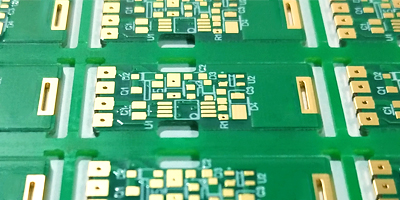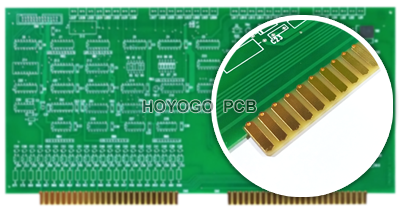If some components on the PCB are exposed to the air for a long time, they are easily oxidized and lose their luster, and they are corroded and lose solderability. Therefore, various technologies must be used to form protection. Among them, there are plating technologies, and the plating technology in PCB is divided into the following four methods:

The first method: Finger-plated plating
This plating method requires the plating of rare metals on the edge of the board, the protruding edge of the board or the gold finger, and can also be called the protruding part plating. In order to provide lower contact resistance and higher wear resistance, manual and automatic plating techniques are generally used. On the other hand, gold plating on contact plugs and gold fingers has now mostly been replaced by rhodium-plated, lead-plated, and plated buttons.

The second method: Through hole plating
There are a number of ways to create a layer of suitable plating on the drill hole walls of the substrate, which is called hole wall activation in industrial applications. Its manufacturers require multiple central storage tanks in the production process, each having its own control and protection requirements. The through hole plating is a necessary process after drilling. When the drill bit is drilled through the copper foil and underlying substrate, the heat generated constitutes the melting of the insulating synthetic resin of most of the substrate substrate. The molten resin and other drill debris are deposited around the hole and coated on the newly exposed copper foil hole wall. The molten resin also leaves a hot axis on the walls of the substrate, which exhibits poor adhesion to most activators, which requires techniques like stain removal and etchback chemistry.
One method that is more suitable for PCB prototyping is to use a specially designed low viscosity solder mask inks to form a highly viscous, highly conductive coating on the inner wall of each via. This eliminates the need for multiple chemical processing steps, requires only one application process, and then thermal curing, which allows a continuous coating to be formed on the inside of all the walls of the hole. And the coating can be directly plated without further processing. This solder mask ink is a resin-based material that is highly viscous and can be bonded to the thermally polished hole wall effortlessly, thus eliminating the need for etchback.
The third method: Roller linkage selective plating
The lead foots and pins of electronic components are selectively plated for excellent contact resistance and corrosion resistance, such as connectors, integrated circuits and transistors. This plating method can be either manual or automated; batch welding is necessary during the production process. If each pin is selectively plated separately, the price will be quite expensive.
Usually, the two ends of the metal foil which are flattened to a desired thickness are punched and cleaned by chemical or mechanical means. Subsequently, continuous plating is performed using nickel, gold, silver, rhodium, a button or tin-nickel alloy, a copper-nickel alloy, a nickel-lead alloy, or the like. The portion of the metal copper foil that does not need to be plated is coated with a resist film, and only the selected copper foil portion can be plated.
The fourth method: Brush plating
The last method is called “brush plating”. It is an electrical stacking technique in which not all parts are immersed in the electrolyte during the plating process. In this plating technique, only a limited area is plated without any effect on other parts.
Brush plating is often used more often in the maintenance of electronic assembly shops and waste PCB; it encapsulates a special anode in an absorbent material that is used to bring the plating solution to where it is needed for plating. (Special anode: a chemically inactive anode, such as graphite.)
